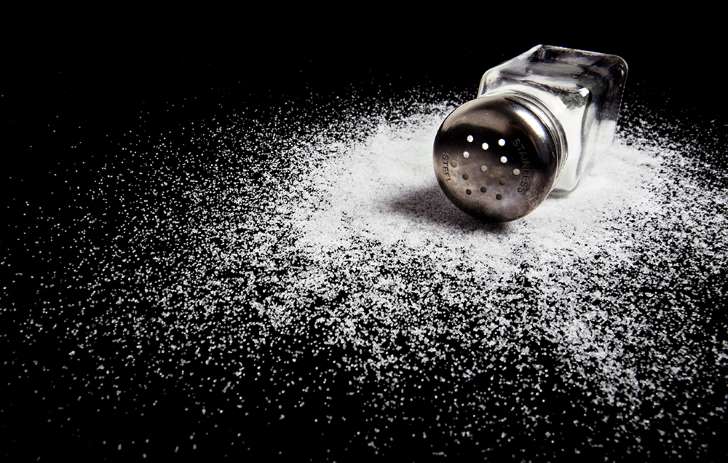You may already know that people with diabetes are advised to follow a low salt diet. Consuming less sodium can help lower blood pressure, subsequently decreasing the risk of heart attack and stroke, two common diabetes complications.
But here’s something you’ve probably never heard about diabetes and salt before: Eating too much of the white granular stuff may actually increase the risk of developing the condition in the first place. At least that’s the takeaway from a new, yet to be published Swedish study presented last week at the annual meeting of the European Association for the Study of Diabetes (EASD) in Lisbon, Portugal.
The report looked at dietary data from a few thousand people in Sweden and found an association between salt intake and diabetes risk. People who consumed 1.25 teaspoons (which translates to about 2,800 milligrams) of salt or more daily were 72% more likely to develop type 2 diabetes than those with the lowest intake. While the focus of the study wasn’t on why this may occur, the researchers hypothesize that a high salt diet may cause insulin resistance, a condition that can lead to type 2 diabetes. Or, it could be that people who consume the most sodium also just so happen to be heavier. (Watch out for these salt bombs.) People who are overweight aren’t always able to properly control blood sugar levels, which puts them at an increased risk of diabetes.
Though the study only shows an association—not a direct cause-and-effect relationship, most of us can only benefit from reducing our salt intake. In fact, the average American consumes about 3,400 milligrams of sodium per day despite the fact that The American Heart Association says adults should ideally limit their intake to no more than 1,500 milligrams per day, with 2,300 milligrams a day being the absolute upper limit.
So how can you dial back your intake to keep diabetes and other diseases like high blood pressure at bay? Try these easy, salt-cutting hacks:
Eat less processed foods. The salt shaker isn’t the only thing at fault here, folks. According to The American Heart Association, about 75% of the sodium Americans eat comes from processed, prepackaged, and restaurant foods. While you probably know that French fries and chicken fingers are salty, even some not-so-awful sounding dishes are loaded with sodium. Hot and sour soup at some chains, for example, can have upwards of 9,500 milligrams of salt. Yes, 9,500 milligrams, or more than six times the daily recommended intake! (You should also steer clear of these 10 healthy foods that are secretly loaded with salt.)
This is what a 74-ingredient soup looks like:
Limit processed red meats. Not only are things like roast beef, pastrami, hamburgers, and hotdogs super salty, eating them regularly has been shown to increase diabetes risk, according to a study published in the journal Diabetologia.
Read the Nutrition Facts label. Sure, it seems obvious, but simply reading labels and avoiding things high in salt can help you drastically cut back on the amount of sodium in your diet. (You should also be aware of these top 4 things nutritionists look for on a food label.)
Rinse canned foods. Canned foods such as such as beans and vegetables often sit in a salt water to stay fresh. Thoroughly rinse them off in the sink before adding them to your plate to keep excess salt out of your diet.
Cook with spices—not salt. Don’t knock it ‘til you try it, guys. You may be surprised just how flavorful your meals can be when you steer clear of the salt shaker. Vegetables taste great topped with black pepper, olive oil, and garlic powder. Chicken and fish fare well dusted with paprika, cayenne pepper, garlic powder, onion powder, dry mustard, and cumin.
Source: Prevention












